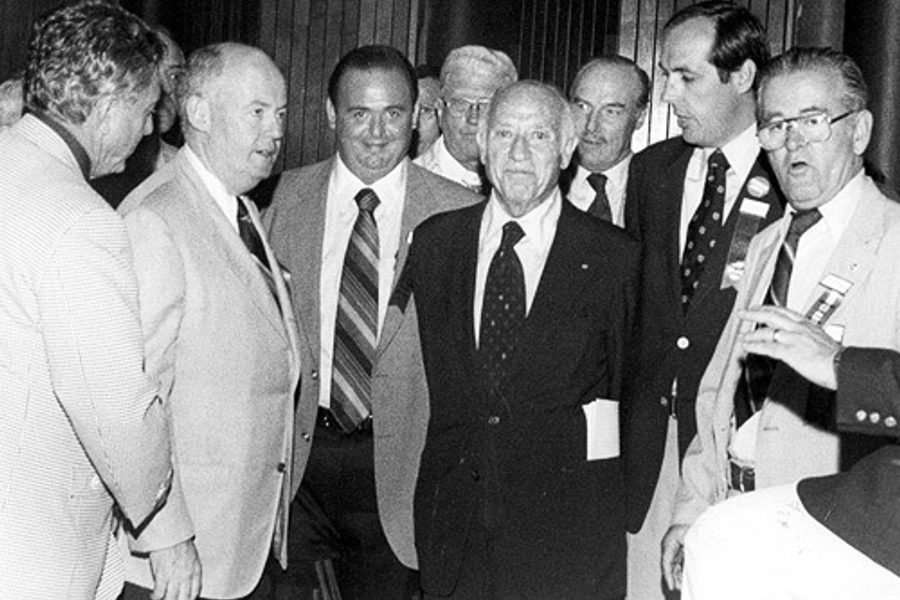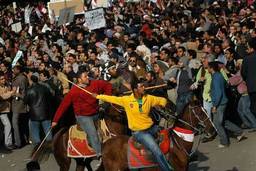
There’s an old union song that starts out, “I dreamed I saw Joe Hill last night.” It’s never happened to me, but Sunday night I did dream that Anderson Cooper interviewed me about Gus Bevona, the former president of SEIU Local 32BJ who passed away last week just a few months shy of 70.
What to say about a high-living, some say corrupt, union boss who towered over the office and residential janitors of New York City for twenty years? My mother taught me not to speak ill of the dead, so I told Anderson the story of the time I recommended to Gus that he could improve his image by cutting his nearly 500G salary in half.
Gus was a big man, topping six-feet-two, weighing more than 350-pounds, running SEIU’s 70,000-member flagship local union like a latter-day Ahab, squelching rank-and-file dissent and paying an army of shop stewards to keep him in power. I wish I could tell you his $450,000 yearly salary was the highest of any local union leader in the United States, but it wouldn’t be true: there were and are dozens of labor bosses who make more.
But he was a bigger character than any of them, operating in secrecy, promoting grandiose ideas like a magnificent new office building for the union, and a posh retirement village in Florida for members, bragging all the while that the cleaners, doormen, and handy persons he represented were the highest-paid building service workers in America (my recall is that meant about $15 an hour, plus a paltry $500 per month pension, but a good health plan).
Gus realized one of his visions and built a multimillion dollar headquarters at 101 Avenue of the Americas in Manhattan. But in doing so, he sparked a mutiny in his membership by constructing a luxury apartment for his private use on the 23rd floor, and then having a dissident shadowed by a private detective. As the dispute went public, I was asked by the SEIU national brass in 1994 to travel to New York and consult with Gus on handling the media criticism and improving his image.
I knew Gus as well as anyone, so I was irritated when he kept me waiting for five hours before coming down to the 22nd floor to meet in a sparse conference room (his office and the apartment on the top floor were closed off to all but a handful of legal and financial advisors). After exchanging pleasantries, he explained his situation, and I responded with my oft-given (but seldom taken) advice that if good public relations come from doing good things and taking credit for them, then “bad” PR comes from doing bad things and being given credit for them. Bottom line: if you want to change the perception, you have to change the reality.
Gus asked what that would entail. I replied we could start with his salary, which he should cut in half. To my surprise, he allowed as how the suggestion was interesting, and said he’d like to think about it overnight. The next morning, I reported to the 22nd floor as we had agreed at ten o’clock. This time, he kept me waiting seven hours. When we finally sat down, he said:
I’ve thought about your suggestion, and I’m not going to do it. First of all, I work 24-hours-a-day for my members and the people I bargain with all make three times what I make. Secondly, this is New York. We have ballplayers for the Yankees who make ten times what I make, and I had a better year than most of them.
With that, he apologized for keeping me waiting and I replied that was OK, because I was being paid by the hour. He asked who was footing the bill, and I said he was. For two additional meetings that year, he was right on time.
At the end of my story, Cooper and his crew packed up and I’ve been checking CNN all day to see if it was indeed a dream. If anyone sees a report, please send me an email; if anyone sees Gus, call me on my mobile phone.
Postscript: When SEIU’s new president Andy Stern asked me to join a team of union staffers and security officers to take control of 32BJ after Gus was forced from office, I finally got a look at the top floor: impressive industrial-style kitchen with a stocked wine cooler, the luxury apartment (furniture uncrated), and Gus’s private office, which looked like the pilot room of a ocean-going ship, his desk a control station outfitted with a dozen television monitors.
After SEIU attorney Judy Scott cracked his computer code, we discovered the screens were monitors for cameras hidden in offices and conference rooms throughout the building. When we found a set of keys in his desk marked with an address in a nearby neighborhood, Stern and SEIU Secretary-Treasurer Anna Burger drove there and discovered an exact and lived-in duplicate of the non-functioning luxury apartment back on the 23nd floor.
This post originally appeared at Ray Abernathy’s blog, On the Left Bank of the Potomac.






